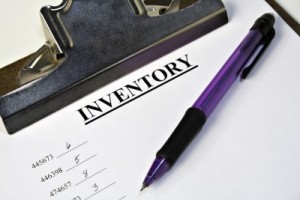 If you are renting in Portland and don’t have renters insurance, get it. A lot of renters believe (I was one of these) that what they own is for the most part not too valuable except maybe one or two items, so they don’t need to worry about it. But I bet if you go through and make a list of what you own and what you paid, you will find that if forced to replace most of these items all at once, that it is more than you could afford out-of-pocket.
If you are renting in Portland and don’t have renters insurance, get it. A lot of renters believe (I was one of these) that what they own is for the most part not too valuable except maybe one or two items, so they don’t need to worry about it. But I bet if you go through and make a list of what you own and what you paid, you will find that if forced to replace most of these items all at once, that it is more than you could afford out-of-pocket.
Now when you own a home in Portland you are required to keep insurance on your home. But what many fail to do (again, myself included) is to update your insurance agent regarding new items. So Would you be able to remember all the possessions you’ve accumulated over the years if they were destroyed by a fire? Having an up-to-date home inventory will help you get your insurance claim settled faster, verify losses for your income tax return and help you purchase the correct amount of insurance.
Start by making a list of your possessions, describing each item and noting where you bought it and its make and model. Clip to your list any sales receipts, purchase contracts, and appraisals you have. For clothing, count the items you own by category — pants, coats, shoes, for example –- making notes about those that are especially
valuable. For major appliance and electronic equipment, record their serial numbers usually found on the back or bottom.
Don’t be put off!
If you are just setting up a household, starting an inventory list can be relatively simple. If you’ve been living in the same house for many years, however, the task of creating a list can be daunting. Still, it’s better to have an incomplete inventory than nothing at all. Start with recent purchases and then try to remember what you can about older possessions.
Big ticket items
Valuable items like jewelry, art work and collectibles may have increased in value since you received them. Check with your agent to make sure that you have adequate insurance for these items. They may need to be insured separately.
Take a picture
Besides the list, you can take pictures of rooms and important individual items. On the back of the photos, note what is shown and where you bought it or the make. Don’t forget things that are in closets or drawers.
Videotape it
Walk through your house or apartment videotaping and describing the contents. Or do the same thing using a tape recorder.
Use a personal computer
Use your PC to make your inventory list. Personal finance software packages often include a homeowners room-by-room inventory program.
Storing the list, photos and tapes
Regardless of how you do it (written list, floppy disk, photos, videotape or audio tape), keep your inventory along with receipts in your safe deposit box or at a friend’s or relative’s home. That way you’ll be sure to have something to give your insurance representative if your home is damaged. When you make a significant purchase, add the information to your inventory while the details are fresh in your mind.
by Betsy Ballantyne
betsy@betsyballantyne.com



 January 18th, 2012
January 18th, 2012  admin
admin  Posted in
Posted in 